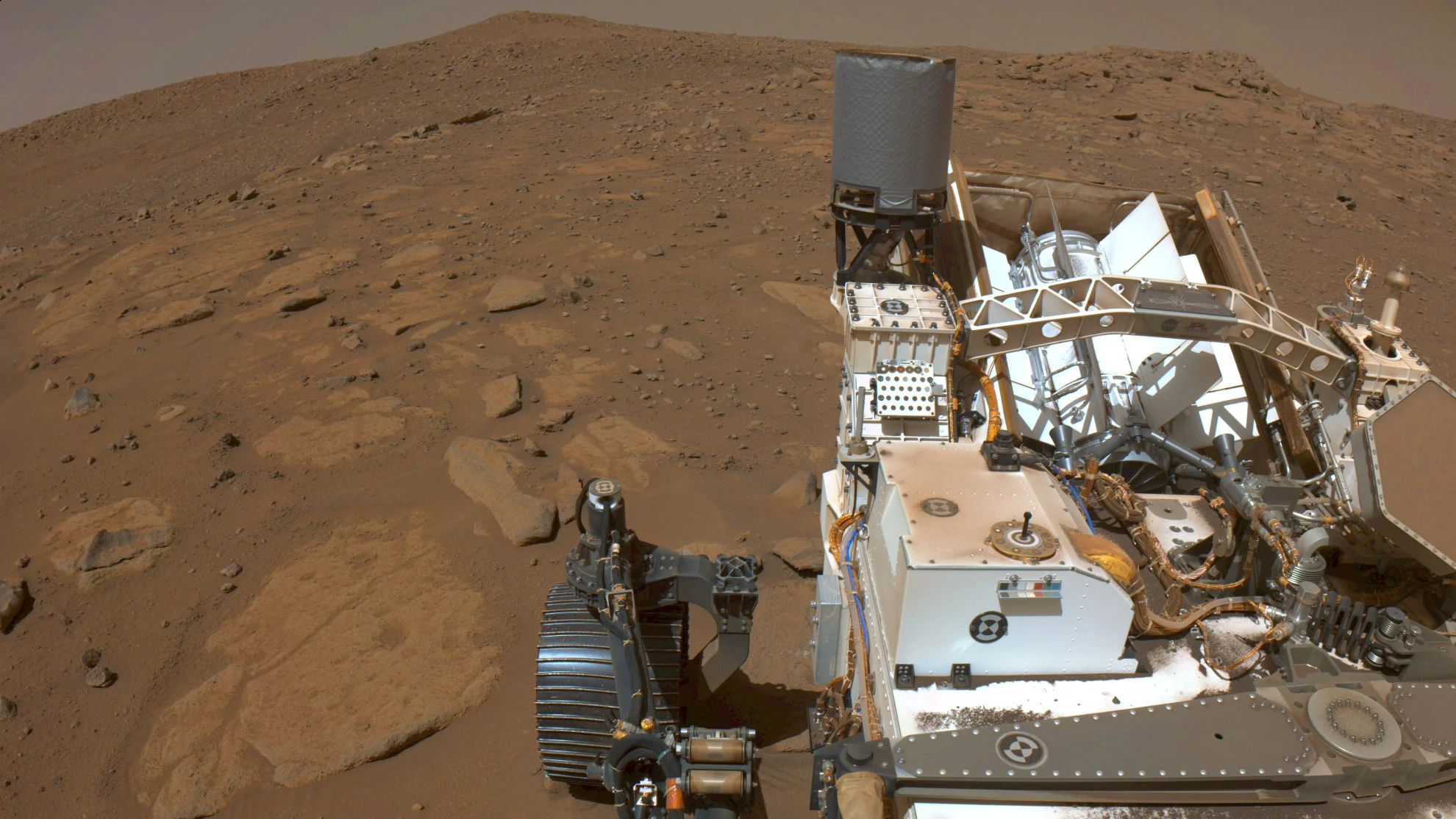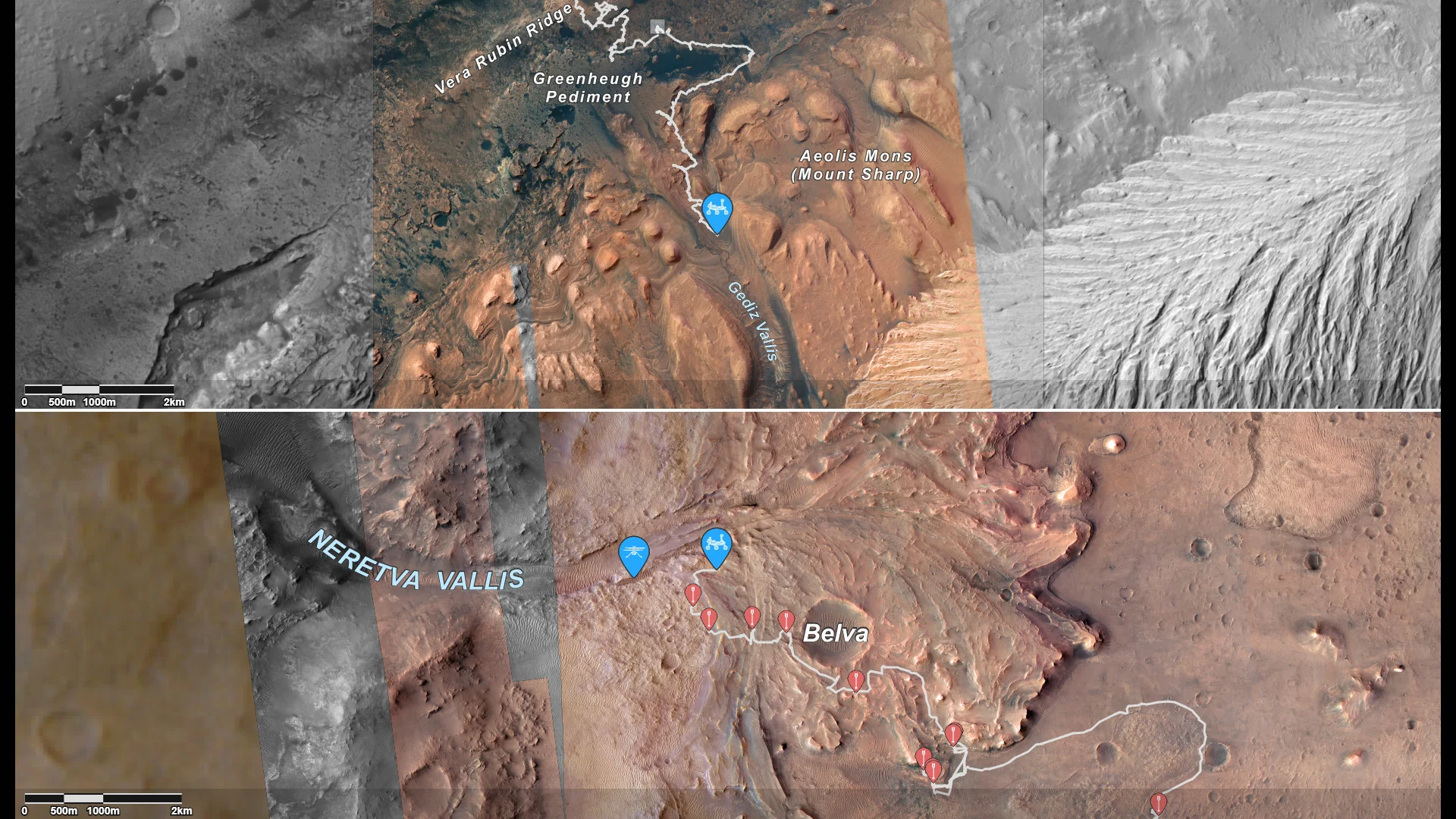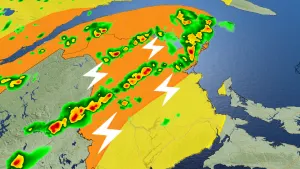
NASA's Mars missions go quiet as Red Planet slips behind the Sun
Issuing orders to any of NASA's Mars explorers right now could invite disaster.
Mars is approaching Solar Conjunction, and NASA has ceased all communications with their missions there, leaving them to do some basic science during this 'celestial break.'
To receive all of the images and science data collected by their rovers and spacecraft, NASA needs a relatively unobstructed path for the radio signals sent by those missions. This also applies to all the instructions the NASA teams send to their distant explorers.
Usually, this isn't a problem. However, November 17 is Mars Solar Conjunction.

Mars Solar Conjunction. Credit: Scott Sutherland/Celestia
On that day, the Red Planet will be on the exact opposite side of the Sun from Earth. This phenomenon occurs once every 25 months or so as Earth and Mars travel along their respective orbits.
READ MORE: Perseverance spotted an immense 2 kilometre-high dust devil on Mars
Each time this happens, NASA stops sending commands to the robots it has exploring Mars for a short time, both before and after the conjunction.
"NASA will hold off sending commands to its Mars fleet for two weeks, from Nov. 11 to 25, while Earth and the Red Planet are on opposite sides of the Sun," the space agency announced on Friday.
"The missions pause because hot, ionized gas expelled from the Sun's corona could potentially corrupt radio signals sent from Earth to NASA's Mars spacecraft, leading to unexpected behaviors," they explained.
Here on Earth, the short break in operations allows the teams to take some well-deserved time off or lets them catch up on any mission backlogs.
At Mars, the three spacecraft in orbit — the Mars Reconnaissance Orbiter (MRO), Mars Odyssey, and MAVEN (the Mars Atmosphere and Volatile EvolutioN mission) — will continue to circle the planet. Meanwhile, the three functioning robots on the surface of Mars — Curiosity, Perseverance, and Ingenuity — will remain in place. Curiosity and Perseverance have now been parked for several days, and Ingenuity will remain grounded until they can once again trust that command signals will get past the Sun intact.

Satellite images taken by orbiters form the basis of these location maps for the Curiosity, Perseverance and Ingenuity rovers. Credit: NASA/JPL-Caltech
DON'T MISS: Dancing with the stars: Euclid captures sharp images of distant galaxies
The missions won't be idle, though.
"Our mission teams have spent months preparing to-do lists for all our Mars spacecraft," said Roy Gladden, manager of the Mars Relay Network at NASA's Jet Propulsion Laboratory. "We'll still be able to hear from them and check their states of health over the next few weeks."
According to the latest mission update for Perseverance, the rover will continue to collect weather and cloud observations, while attempting to capture more images of dust devils. It will also watch for changes around it, use its microphones to collect local sounds, and conduct science with its RIMFAX ground-penetrating radar imager. Ingenuity will be using its colour camera to watch the sand underneath it for movement, which will help the mission team better understand the Martian environment.
Curiosity, which just celebrated its 4,000th Sol on Mars, will keep busy by doing the same kind of environmental monitoring that Perseverance is doing — observing weather and clouds, and watching for dust devils.
As for the orbiters, MRO and Odyssey will continue taking images of the surface, while MAVEN will keep collecting data on how Mars' atmosphere interacts with the solar wind and the Sun.
So, things will be relatively quiet on NASA's Deep Space Network over the next 10 days. This is especially true over the next few days, as all communications cease — to and from Mars — when the planet is directly behind the Sun.
Check back for updates towards the end of November, when the images and science data start rolling in again. Then we can see what happened on Mars while it was on the other side of the solar system from us.










